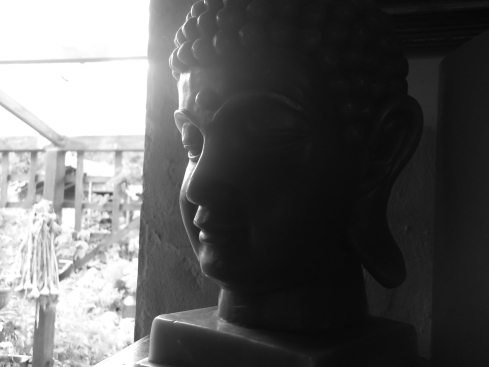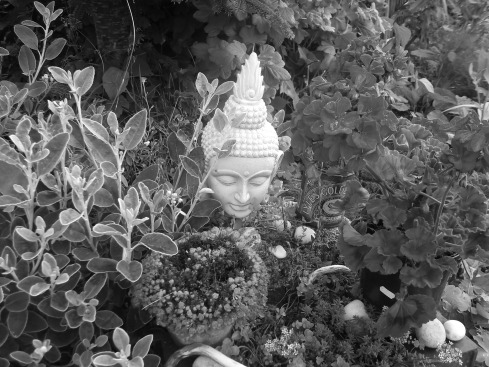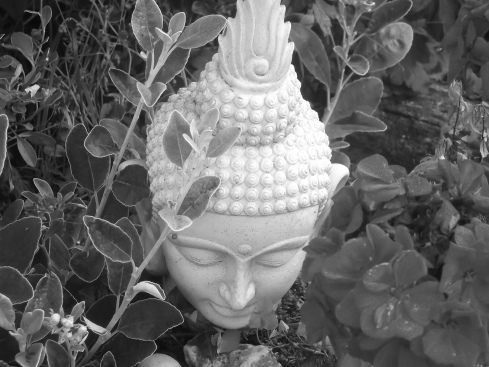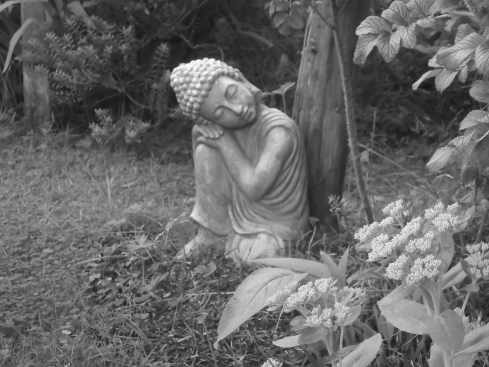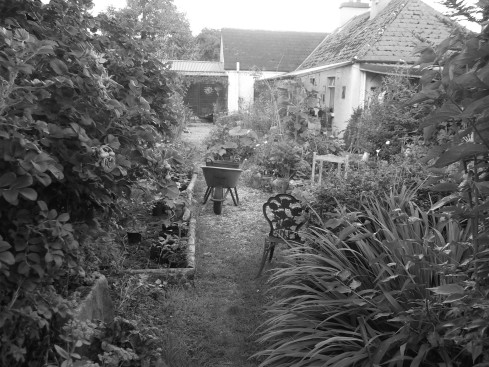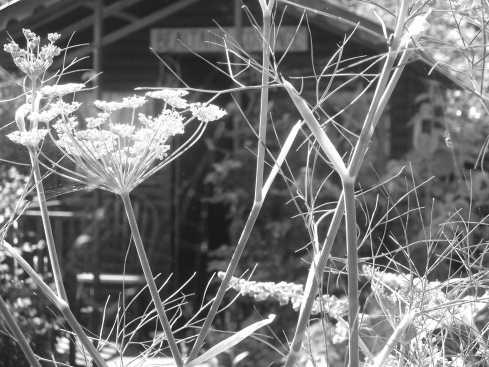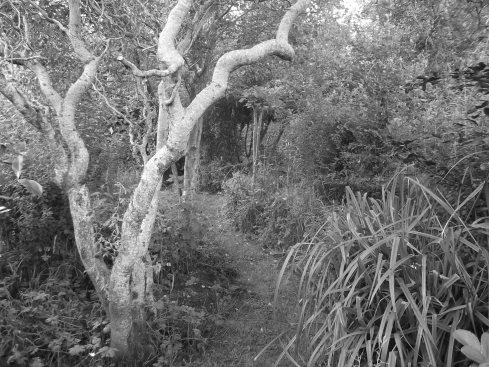Goethe's Theory of Colours
Theory of Colours (Zur Farbenlehre) Goethe was originally published in 1810. In his treatise on colors 1400 pages, Goethe reformulated the theory of colors in an entirely new way, being the first to dare to confront Newton's ideas about light and color. Newton saw the colors as a purely physical phenomenon, involving light hitting objects and enters our eyes.
Goethe conceived the idea that the color sensations that arise in our mind are also shaped by our perception - the mechanisms of vision and the way our brain processes such information.
The work of Goethe continued to fascinate scientists for many years, among them we can highlight greats such as Hermann von Helmholtz, Werner Heisenberg, Walter Heitler and Carl Friedrich von Weizsäcker.
Recently, the theory of Chaos, Mitchell Feigenbaum, referring to the work of Goethe, he was surprised to find that "Goethe had performed an extraordinary set of experiments investigating the colors" and was correct in his observations.
To support its vision in which the main characteristic of the colors are symmetry and complementarity, Goethe proposed to modify the circle of Newton who had sustained seven colors unequal angles. Creates a symmetrical circle where the complementary colors are located in diametrically opposite positions on the circle.
Title used in the introduction of Goethe's Theory of Colours. "If our things are true or false, so will still defend that for life. After our death, the children, who now play, will be our judges. "
For Newton, only the colors of the spectrum could be regarded as fundamental. Goethe, based on their experiments, concludes that colors such as magenta, a color spectrum not, have an important role to complete the circle of colors, which is supported by the most modern systems of colors.
Artists who handled colors felt more attracted by the proposed Goethe than by Newton.
A painter strongly influenced by the ideas of Goethe was J. M. W. Turner (1775-1851), whose painting "Light and Colour (Goethe's Theory)" is displayed in the 'Tate Britain' in London.
Aristotle's theory
Early studies of color were made by Aristotle in ancient Greece. According to him the colors existed in the form of rays sent by God. His theory was not challenged until the Renaissance when more sophisticated color systems were developed by Aguilonius and Sigfrid Forsius.
For Aristotle, the colors were those of the simplest elements: earth, air, fire and water.
His view was based on his conception of color, the observation that the sunlight, crossing or reflecting on an object, its intensity is reduced, darkens.
Through this process would be produced color, or color would be derived from a transition from light to dark, or otherwise, through the Aristotle as a blend, a composite, an overlap of black and white.
This view, which remained until the time of Newton (1642-1727), has the sun as a light so pure and colorless, the color should be some kind of constituent objects and allowing media to be opaque or transparent, being able to degrade the purity of the incident light.
Some doubts about the theory of Aristotle began to be raised at the beginning of the seventeenth century due to the discovery of interfering colors - colors of very thin films, such as a soap bubble - that change dramatically as the angle of observation. These films appeared to have all the colors themselves and at the same time degrading the incident sunlight in different ways depending on the angle of observation.
Leonardo da Vinci, like Aristotle, believed that the colors are the property of objects. In his treatise on painting wrote: "The first of all single colors is white, while philosophers will not accept both white and black as colors because white is the cause or receiver of all colors, and black is a total deprivation of them . But as painters can not do without both, put them among the others. (...) We can put white as representative of light without which no color can be seen, yellow for earth, green for water, blue for air, red for fire and black for the darkness. "
The greatest difficulty with the approach proposed by Aristotle's perception is the claim that the relevant sensory faculties of the senses become similar to the objects they perceive. "Sensitive knowledge, sensation, assume a physical fact, namely, the action of the object on the sensitive organ that feels, immediate or remote, through the movement of a medium. But the physical fact becomes a psychic fact, that is the feeling itself, because of the specific college and sensory activity of the soul.
Newton's theory
Current knowledge of light and color began with the work of Isaac Newton (1642-1726), a series of experiments whose results were published in the "New Theory of Light and Colours" in 1672, in a formal letter to the Royal Society of London. The main experiment consisted in having a prism near his window, projecting a spectrum, created by the refraction of a ray of white light circular, on a wall, showing the color components:
red, orange, yellow, green, blue, indigo and violet.
Beginning with the observation that the image created was not circular, the radius original Newton inferred from the principles of its new theory: sunlight would be formed from a mixture of different radii "refratabilidade."
To show that the prism was not coloring the light, the light was refracted collimated again, so getting the white.
The artists were fascinated by the demonstration of Newton that only light would be responsible for color and created an array of colors in a circle of concepts, allowing to have the primary colors (red, yellow, blue) diametrically opposed to their complementary ( for example, red would be opposed to green), so as to show the complementary color would be opposite to each other through an optical contrast effect.
Newton was the first to arrange the colors in a circle. His circle had seven main colors that was related to the seven planets and the seven musical notes of the diatonic scale: red, orange, yellow, green, blue, indigo, violet. The theory of three primary colors: red, yellow and blue was originally proposed a century later by Frenchman Jean C. Le Bon, which was published on the one treated pigment blend. This theory has become since then the basis for any work involving colored pigments.
Goethe's Theory
Goethe argues that the look is always critical. Just look would not be a stimulus, a stimulus is an experience that goes beyond simply observing, creates a bond theory and leads the viewer to draw their own conclusions.
Jedes Ansehen geht über in Betrachten, in ein jedes betrachtendes Sinnen, verknüpft in ein jedes Sinnen, und so kann man sagen, dass wir schon bei jedem aufmerksamen Blick in die Welt theoretisieren. Dieses aber mit Bewusstsein, Selbsterkenntnis, mit Freiheit und eines sich Wagens und des Wortes, auch mit Ironie zu tun und vorzunehmen,. Dafür ist eine solche Wort-gewandheit nötig, wenn die Abstraktion, vor der sich jeder scheut unschädlich und als Erfahrungsresultat dargestellt wird in der Hoffnung, dies recht lebendig und nützlich zu gestalten. (Zur Farbenlehre. Didaktischer Teil - Vorwort - Goethe)
Every look involves an observation, each observation reflection, each reflection a synthesis: to look closely at the world we are theorizing. We must, however, theorize and proceed with awareness, self-knowledge, freedom, and - if necessary use a bold word - with irony: this skill is essential for the abstraction, we fear, is not harmful, and the empirical result, we desire, is useful for us and vital. (Doctrine of Colors. Outline of a Doctrine of Colours - Goethe (translation of Marco Giannotti)
For Goethe sensitivity is not just receptivity, but also impulsivity.
The colors are interpreted as doubly Leiden (passion) and how Tat (action) of light.
Die Farben des sind Taten Lichts, Taten und Leiden. In diesem Sinne k ¨ Onnen wir von denselben Aufschl usse ¨ ¨ uber erwarten of Licht. Licht und Farben stehen Zwar untereinander in dem genaustenVerh ¨ altnis, aber wir m ¨ USSEN each beide als der Natur ganzen angehorig denken: sie denn es ist ganz, die sich dem Sinne des dadurch Peeks besonders offenbaren will. (Zur Farbenlehre. Didaktischer Teil - Vorwort - Goethe)
The colors are actions and passions of light. Accordingly, we expect them some indication of the light. In fact, light and colors relate perfectly, though we think them as belonging to nature as a whole: it is so full that wants to reveal the sense of sight. (Doctrine of Colors. Outline of a Doctrine of Colours - Goethe (translation of Marco Giannotti)
Nature is something built by our eyes, and it exists only when it is revealed to the senses.
"Natural laws are made and related to each other as the School of the judge were produced for their own use."
The color is not only light, but also impulsivity that is born in passion, in the eyes as a way to create nature.
The light is not only within each, as ends up identifying with the subject.
At this point, Goethe seems to approach the work of Kant. In his Critique of Judgment nature is placed in an "aestheticized" because man thinks nature the same way that interprets a work of art.
The style of this work of Goethe is alternately a speech rigorously scientific or poetic discourse, and sometimes called a literature.
Goethe's work is an attempt to sort and combine the chromatic phenomena to understand the principles that govern them and how this sort leads to a differentiation in terms of aesthetics.
Die Lust zum Wissen wird bei dem Menschen zuerst dadurch angeregt, dass er bedeutende Phänomene gewahrt, auf die sich seine seine Aufmerksamkeit richtet. Damit diese andauern, muß es zu einer innigeren Teilnahme kommen, die nach und nach jeden Gegenstand miteinander bekannter macht. Alsdann bemerken wir erst eine größere Mannigfaltigkeit, als die, die jede Menge für sich darbringt. Wir sind dann wieder genötigt, wieder Unterscheidungen zusammenzustellen, wodurch zuletzt eine Ordnung entsteht, die sich mit mehr oder weniger Zufriedenheit übersehen lässt. (Zur Farbenlehre. Didaktischer Teil - Einleitung - Goethe)
Man is taken by the desire to learn and to know more on if remarkable phenomena will draw on his attention. To continue with such studies, there must be a deeper interest to which he is drawn in order to approach closer to the concerned objects. We observed a great diversity before us. We are forced to separate it, distinguish it and recompose it, resulting in an order that can be enjoyed with more or less satisfaction. (Doctrine of Colors. Outline of a Doctrine of Colours - Goethe-Introduction (translation of Marco Giannotti)
Nature is revealed to the sense of sight through the light and colors and so it is possible to distinguish one object from another, or the various parts of an object. The visible world is rebuilt, and it creates a dissociation between what is and what appears to be. Goethe takes up this point, the idea of Kepler 3, who defines the human eye as a producer of mechanical paintings, defining "see" how to "paint", and painting as formative of nonlinear retinal image. Kepler was the first to separate the physical problem of the formation of retinal images (the world seen) the psychological problems of perception (the perceived world).
Enlightenment
Kepler was a striking figure in the scientific revolution. Born in Germany, he became an astronomer, mathematician and astrologer. He is best known for his laws of motion of the planets. It is sometimes referred to as the first theoretical astrophysicist, although Carl Sagan prefer to call him the last astrologer scientist.
Und wir - erbauen aus diesen so sichtbaren Dreien die Welt und diese mit der Malerei zusammen machen es dadurch zugleich möglich, welche auf der Tafel eine weit vollkommenere sichtbare Welt als sein kann als die Wirkliche hervorzubringen vermag. (Zur Farbenlehre. Didaktischer Teil - Einleitung - Goethe)
And we build the world visible from the course, and the dark color, and they also make it possible to paint, which is capable of producing, in the plane, a world visible much more perfect than the real world. (Doctrine of Colors . Outline of a Doctrine of Colours - Goethe-Introduction (translation of Marco Giannotti)
Goethe was convinced that the whole of nature is revealed, like through a glass, the sense of sight, through the dialectic between split and merge, intensify and neutralize. It is therefore through the opposition and the implementation in the world of perception concepts are born, and thus results enjoyment and creates the aesthetic as an object.
Die Farbe ist ein elementares Naturphänomen als die sie sich wie alle übrigen auch durch Trennung Gegensatz, Durchmischung durch und Vereinigung demn flüchtigen Blick darstellt. Ebenfalls durch Neutralization, Mitteilung und so weiter wird eine Verbreitung manifestiert. Dies kann allgemein und am besten als naturgegeben angeschaut und begriffen werden . (Zur Farbenlehre. Didaktischer Teil - Einleitung - Goethe)
(...) The color is a phenomenon of nature to elementary sense of sight, which, like all others, is manifested to divide and oppose, mingle and merge, intensify and neutering, to be shared and distributed, and can be Highly sensed and designed in such formulas nature. (Doctrine of Colors. Outline of a Doctrine of Colors - Introduction - Goethe (translation of Marco Giannotti)
"For Goethe the vital principle of nature is at the same time, the human soul itself, both having the same equal rights, but coming from the unity of being, which, in the diversity of its settings, develops creative principle of equality, so that man can find in his own heart the whole secret of being, and perhaps also the solution. "(Simmel)
"Another important aspect to be mentioned is the fact that the divergence of Goethe against Newton is not reduced to a personal dispute because eventually involved a controversy between German idealism and Newtonian physicists. Actually, what was behind this division is the clash of two completely different ways of thinking about nature. German idealism refuses to mechanistic viewpoint, since both nature and interprets the art from the idea of the body, an inner purpose. The color can not be simply caused by light and must be considered in relation to the specific organ. "(Marco Giannotti)
The first three sections of the work of Goethe deal with colors on it physiological point of view, physical and chemical: Physiological Colors (Physiologische Farben), Physical Colors (Physische Farben) Colors and Chemicals (Chemische Farben).
Also betrachteten wir die Farben zuerst, insofern sie dem Auge moit dem Auge wahrnehmbar sind beruhend auf einer Wirkung und Gegenwirkung desselben ; ferner als die Aufmerksamkeit auf sich ziehend, indem wir sie an farblosen Mitteln oder durch deren Mithilfe wahrnehmen. Bemerkensert wurden jedoch erst, wenn sie als dem anderen Objekt als zugehörig angesehen und betrachtet wurden. Die ersten nannten wir physiologische , die zweiten physische, dritten chemische Farben. Erdtere sind als unaufhaltsam fließend in ihrer eigenschadt zu bezeichnen, die anderen als ineinander übergehend aber allenfalls verweilend, und die letzten als weitgehend andauernd festzuhalten. (Zur Farbenlehre. Didaktischer Teil - Einleitung - Goethe)
Consider, first, as the colors that belong to the eye, and depends on their ability to act and react. Then attract the attention since the colorless realized by means of or with the assistance thereof. Finally, are noteworthy insofar as we think of them as part of the object. Physiological of the first call, the second of the third to physical and chemical properties. The former are constantly fleeting, the latter are passing, although they have a certain permanence. The latter have long lasting. (Doctrine of Colors. Outline of a Doctrine of Colors - Introduction - Goethe (translation of Marco Giannotti)
The fourth section is a general perspective of internal relations being addressed aspects of the emergence and identification of colors. According to Goethe, a set of colors is created by the incidence of light on the retina, which is a legitimate reaction because of the sensitivity of the eye to light. The colors can be determined by the opposition, polarity between blue and yellow; action and deprivation, light and shadow, strength and weakness, light and dark, hot and cold, proximity and distance, repulsion and attraction, affinity with acids and alkalis affinity.
In dieser steten Reihehaben wir, soviel wie möglich Erscheinungen zu bestimmen und zuzuordnen versucht. Jetzt können wir, da wir nicht mehr befürrchten müssen, sie zu vermischen oder sie durcheinander zu bringen, es unternehmen, erstlich als allgemein anzugeben, was sich von diesen Erscheinungen innerhalb des geschlossenen Kreises darstellt, zweitens ebenfalls darauf hinzuweisen, wie sich dieser besondere Kreis an die übrigen Glieder verwandter Naturerscheinungen anschließt und sich mit Ihnen verkettet. (Zur Farbenlehre. Vierte Abteilung - Allgemeine Ansichten nach Innen - Goethe)
Wherever possible, we seek to determine, separate and sort the phenomena according to this continuum. Now that we are not afraid to mix them or confuse them, we take first the task of judging, in the circle, which is the universal phenomena, then to point out how this particular circle is linked together and joins the rest of the phenomena natural like. (Doctrine of Colors. Fourth Section - Goethe (translation of Marco Giannotti)
Goethe in the fifth section analyzes the different relationships that color sets with many different disciplines: Philosophy, Mathematics, Technical Dye, Physiology and Pathology, Natural History, General Physics, Music, Language and Terminology.
Dass ein gewisses Verhältnis der Farbe zum Ton/Schattierung stattfindet, hat man jeher von gefühlt, was Vergleiche des öfteren teils vorläufig, teils auch sehr umständlich beweisen. Der Fehler, den man hiebei oft begangen hat, beruht nur auf folgendem: Vergleichen lassen sich untereinander Ton und Farbe auf keine Weise, aber beide lassen sich auf eine Formel bringen die obere Höhe betreffend. Beide, jedoch jede Farbe für sich allein. Wie zwei Flüsse, die auf einem Berg entspringen jedoch unter verschiedenen Bedingungen in zwei ganz entgegengesetzte Weltgegenden laufen, so dass auf dem ganzen beiderseitigen Wege keine Stelle einzeln mit der anderen verglichen werden kann. So sind auch Farbe und Ton. Beide sind allgemein elementare Wirkungen nach dem Gesetz des allgemeinen Trennens und Wieder-Zusammenstrebens, des Aufsteigens und des Abschwächens, wirkend im Hin und Herwägens jedoch nach ganz verschiedenen Seiten, in verschiedenen Weisen und für verschiedene Sinne reagierend auf verschiedene Zwischenelemente. Möchte jemand die Art und Weise, wie wir die Farbenlehre an die allgemeine Naturlehre anknüpfen, recht fassen und dasjenige, was dabei übersehen wurde, durch Glück und Genialität zu ersetzen, so wird die Wellen-Tonlehre sich nach unserer Überzeugung an die Allgemeine Physik vollkommen anzuschließen sein. Zur Zeit stellt sie sich nur innerhalb derselben gleichsam als historisch abgesondert dar. Jedoch darin eben liegt die gtößte Schwierigke. Für die in jeder Musik auf seltsamen positiven - empirishen - zufälligen Wegen mathematischen, ästhetischen, genialischen Ursprungs Befürwortung zu Gunsten einer physikalischen Behandlung zerst zu hören und dann erst ihre in physische Elemente aufzulösen. Vielleicht wären wir hier auch auch zu dem Punkte gelangt, wo sich Zeit und Gelegenheit anbietet, daß sich Wissenschaft und Kunst nach manch einer schöne Vorarbeit zusammenfinden . (Zur Farbenlehre. Vierte Abteilung - Allgemeine Ansichten nach Innen - Goethe)
Always realized that there is some relationship between color and sound, as evidenced by the frequent comparisons sometimes passing, sometimes sufficiently detailed. The error committed therein is due to the following: color and sound can be compared in any way, although both higher refer to a formula, from which it can be deduced each. Both are like two rivers that are born on the same mountain, but due to various circumstances run on opposite regions, so that throughout the ride there is no point at which they can be compared. Both effects are general and elementary according to universal law that tends to separate and unite, weave, weighing now one side, now on the other side of the scale, but as aspects, ways, intermediate elements and senses completely separate. (Doctrine of Colors. Quinta Section - Goethe (translation of Marco Giannotti)
In the last section Goethe talks about the effects sensitive, moral and aesthetic that arise. For each color, a hue for each color, Goethe analyzing their characteristics and their effect on our eyes. Establish relations of harmony and complementarity between all the colors of the color wheel.
Hier liegt also das Grundgesetz aller Harmonie der Farben und davon mag sich jeder durch eigene Erfahrung überzeigen kannwovon sich jeder kann, indem er sich mit den Versuchen, die wir in der Abteilung der physiologischen Frben aufgezeigt habn, genau bekannt macht. Wird nun die Farbentotalität außen vor das Auge als Objekt gebracht, so erscheint sie dem Auge erfreulich, weil ihm die Summe der eigenen Tätigkeit zuerst von dieser harmonischen Zusammenstellung als Netzwerk der Realitätt entgegen kommt. (Zur Farbenlehre. Sechste Abteilung - totalit at ¨ und Harmonie - Goethe)
Here lies the fundamental law of all chromatic harmony, in respect of which any one may be convinced by experience, to make the acquaintance of the experiments described in the physiological colors.
If the entire chromatic appears outwardly to the eye as an object, it becomes enjoyable for him, because the result of their own activity it looks like reality. We will deal first of these harmonic compositions. (Doctrine of Colors. Sixth Section - Wholeness and Harmony - Goethe (translation of Marco Giannotti)







